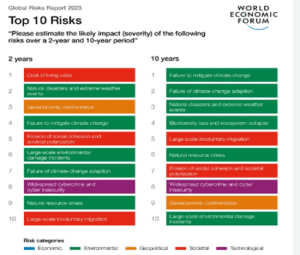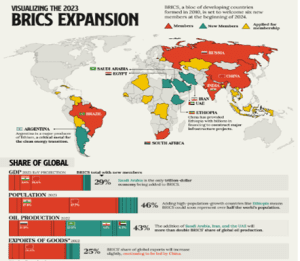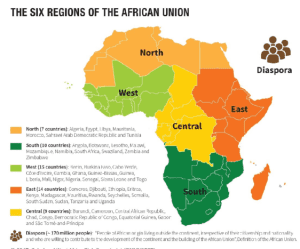Day-590 | Daily MCQs | UPSC Prelims | ECONOMICS
Day-590
Quiz-summary
0 of 5 questions completed
Questions:
- 1
- 2
- 3
- 4
- 5
Information
DAILY MCQ
You have already completed the quiz before. Hence you can not start it again.
Quiz is loading...
You must sign in or sign up to start the quiz.
You have to finish following quiz, to start this quiz:
Results
0 of 5 questions answered correctly
Your time:
Time has elapsed
You have reached 0 of 0 points, (0)
Categories
- Not categorized 0%
- 1
- 2
- 3
- 4
- 5
- Answered
- Review
-
Question 1 of 5
1. Question
1. In the context of economics, which one of the following statements best describes the term ‘liquidity trap’?
Correct
Answer: D
Explanation:
A liquidity trap is a situation where interest rates in the economy are at very low levels and savings rates are too high. In this situation, monetary policy has no effect on interest rate or the level of income.
● Interest rate can be considered as an opportunity cost or ‘price’ of holding money balance. If the supply of money in the economy increases and people purchase bonds with this extra money, demand for bonds will go up, bond prices will rise and rate of interest will decline.
● However, if the market rate of interest is already low enough so that everybody expects it to rise in future, causing capital losses, nobody will wish to hold bonds.
● In that case, everyone in the economy will hold their wealth in money balance and if additional money is injected within the economy, it will be used up to satiate people’s craving for money balances without increasing the demand for bonds and without further lowering the rate of interest. Such a situation is called a liquidity trap. Hence, monetary policy will be ineffective here.Incorrect
Answer: D
Explanation:
A liquidity trap is a situation where interest rates in the economy are at very low levels and savings rates are too high. In this situation, monetary policy has no effect on interest rate or the level of income.
● Interest rate can be considered as an opportunity cost or ‘price’ of holding money balance. If the supply of money in the economy increases and people purchase bonds with this extra money, demand for bonds will go up, bond prices will rise and rate of interest will decline.
● However, if the market rate of interest is already low enough so that everybody expects it to rise in future, causing capital losses, nobody will wish to hold bonds.
● In that case, everyone in the economy will hold their wealth in money balance and if additional money is injected within the economy, it will be used up to satiate people’s craving for money balances without increasing the demand for bonds and without further lowering the rate of interest. Such a situation is called a liquidity trap. Hence, monetary policy will be ineffective here. -
Question 2 of 5
2. Question
2. Consider the following statements about Ways and Means Advances:
1. These are long-term advances provided by the Reserve Bank of India (RBI) to the Central government and State governments.
2. Interest rate on the advances is charged at the existing reverse repo rate.
3. The limits for extending credit are mutually decided by the Central government and the RBI.
How many of the above statements are correct?Correct
Answer: A
Explanation:
Statement 1 is incorrect: The Reserve Bank of India (RBI) gives short-term loan facilities to the central and state governments to bridge a temporary mismatch in their cash flows, as laid down in terms of Section 17(5) of the RBI Act, 1934.
The WMA mechanism to the Centre was re-introduced on April 1, 1997 after a period of four decades when the system of ad hoc treasury bills was abolished.
Statement 2 is incorrect: The government can avail of immediate cash from the RBI, if required. But it must return the amount within 90 days. Interest is charged at the existing repo rate.
● If the WMA exceeds 90 days, it would be treated as an overdraft (interest rate on overdrafts is 2 percentage points more than the repo rate).
Statement 3 is correct: The limits for Ways and Means Advances are decided by the Central government and the RBI mutually and revised periodically.
● As the evidence reveals, there is no defined process in the fixation of WMA limits. Sometimes it is quarterly, and at other times it is half-yearly.
● The RBI Annual Report stated that the WMA limits were fixed quarterly and half yearly in 2017-18 (Q1: ₹60,000 crore, Q2: ₹70,000 crore and H2: ₹25,000 crore). Similarly, there were quarterly and half yearly limits for 2018-19 (Q1: ₹60,000 crore, Q2: ₹70,000 crore and H2: ₹35,000 crore). However, this was reversed in 2019-20 with half-yearly estimates.
● For the second half of the financial year 2023-24 (October 2023 to March 2024), the limit for the Centre has been set at ₹50,000 crore.Incorrect
Answer: A
Explanation:
Statement 1 is incorrect: The Reserve Bank of India (RBI) gives short-term loan facilities to the central and state governments to bridge a temporary mismatch in their cash flows, as laid down in terms of Section 17(5) of the RBI Act, 1934.
The WMA mechanism to the Centre was re-introduced on April 1, 1997 after a period of four decades when the system of ad hoc treasury bills was abolished.
Statement 2 is incorrect: The government can avail of immediate cash from the RBI, if required. But it must return the amount within 90 days. Interest is charged at the existing repo rate.
● If the WMA exceeds 90 days, it would be treated as an overdraft (interest rate on overdrafts is 2 percentage points more than the repo rate).
Statement 3 is correct: The limits for Ways and Means Advances are decided by the Central government and the RBI mutually and revised periodically.
● As the evidence reveals, there is no defined process in the fixation of WMA limits. Sometimes it is quarterly, and at other times it is half-yearly.
● The RBI Annual Report stated that the WMA limits were fixed quarterly and half yearly in 2017-18 (Q1: ₹60,000 crore, Q2: ₹70,000 crore and H2: ₹25,000 crore). Similarly, there were quarterly and half yearly limits for 2018-19 (Q1: ₹60,000 crore, Q2: ₹70,000 crore and H2: ₹35,000 crore). However, this was reversed in 2019-20 with half-yearly estimates.
● For the second half of the financial year 2023-24 (October 2023 to March 2024), the limit for the Centre has been set at ₹50,000 crore. -
Question 3 of 5
3. Question
3. Consider the following statements:
Statement-I: The Non-Banking Finance Companies (NBFCs) carry inherent risks of excess leverage.
Statement-II: The Reserve Bank of India has not prescribed prudential norms for NBFCs.
Which one of the following is correct in respect of the above statements?Correct
Answer: A
Explanation:
Statement-I is correct but Statement-II is incorrect
Statement I is correct: A Non-Banking Financial Company (NBFC) is a company registered under the Companies Act, 1956 engaged in the business of loans and advances, acquisition of shares/stocks/bonds/debentures/securities issued by the government or local authority or other marketable securities of a like nature, leasing, hire-purchase, insurance business, chit business but does not include any institution whose principal business is that of agriculture activity, industrial activity, purchase or sale of any goods (other than securities) or providing any services and sale/purchase/construction of immovable property.
● Given the nature of their operations, NBFCs also carry inherent risks, including excess leverage (indebtedness) and concentrations risks.
● On an average, NBFCs in India have a higher debt-to-equity ratio compared to banks. This indicates a greater reliance on borrowed funds, potentially amplifying their vulnerability to economic downturns and rising interest rates.
● A significant portion of NBFC loans are concentrated in specific sectors like real estate, infrastructure, and microfinance. These sectors are inherently cyclical and susceptible to adverse shocks, which could impact the stability of NBFCs with high exposure.
● They are regarded as shadow banks by the Financial Stability Board.
Statement II is incorrect: The RBI has prescribed prudential norms for all the NBFCs. Prudential norms refer to the set of laws and rules designed to minimise the risks banks/financial entities assume.
● NBFCs were brought under the regulation of the Reserve Bank in 1964 by inserting Chapter III B in the Reserve Bank of India Act, 1934.
● In more recent years, regulatory measures have been motivated by the objectives of financial stability, financial inclusion and harnessing of specialised domain expertise.
● The Reserve Bank of India (Amendment) Act, 1997 made it obligatory for NBFCs to apply to the central bank for a certificate of registration (CoR).
● Based on deposit mobilisation, NBFCs are classified into two major categories: NBFCs-D (deposit taking) and NBFCs-ND (non-deposit taking).
● A conscious policy was pursued to discourage acceptance of deposits by NBFCs so that only banks accept public deposits. Hence, no new license has been given to NBFCs-D after 1997.
● NBFCs-ND were sub-divided into two categories in 2006 — Systemically Important Non- Deposit taking NBFCs (NBFCs-ND-SI) and other Non-Deposit taking NBFCs (NBFCs-ND) based on asset size.Incorrect
Answer: A
Explanation:
Statement-I is correct but Statement-II is incorrect
Statement I is correct: A Non-Banking Financial Company (NBFC) is a company registered under the Companies Act, 1956 engaged in the business of loans and advances, acquisition of shares/stocks/bonds/debentures/securities issued by the government or local authority or other marketable securities of a like nature, leasing, hire-purchase, insurance business, chit business but does not include any institution whose principal business is that of agriculture activity, industrial activity, purchase or sale of any goods (other than securities) or providing any services and sale/purchase/construction of immovable property.
● Given the nature of their operations, NBFCs also carry inherent risks, including excess leverage (indebtedness) and concentrations risks.
● On an average, NBFCs in India have a higher debt-to-equity ratio compared to banks. This indicates a greater reliance on borrowed funds, potentially amplifying their vulnerability to economic downturns and rising interest rates.
● A significant portion of NBFC loans are concentrated in specific sectors like real estate, infrastructure, and microfinance. These sectors are inherently cyclical and susceptible to adverse shocks, which could impact the stability of NBFCs with high exposure.
● They are regarded as shadow banks by the Financial Stability Board.
Statement II is incorrect: The RBI has prescribed prudential norms for all the NBFCs. Prudential norms refer to the set of laws and rules designed to minimise the risks banks/financial entities assume.
● NBFCs were brought under the regulation of the Reserve Bank in 1964 by inserting Chapter III B in the Reserve Bank of India Act, 1934.
● In more recent years, regulatory measures have been motivated by the objectives of financial stability, financial inclusion and harnessing of specialised domain expertise.
● The Reserve Bank of India (Amendment) Act, 1997 made it obligatory for NBFCs to apply to the central bank for a certificate of registration (CoR).
● Based on deposit mobilisation, NBFCs are classified into two major categories: NBFCs-D (deposit taking) and NBFCs-ND (non-deposit taking).
● A conscious policy was pursued to discourage acceptance of deposits by NBFCs so that only banks accept public deposits. Hence, no new license has been given to NBFCs-D after 1997.
● NBFCs-ND were sub-divided into two categories in 2006 — Systemically Important Non- Deposit taking NBFCs (NBFCs-ND-SI) and other Non-Deposit taking NBFCs (NBFCs-ND) based on asset size. -
Question 4 of 5
4. Question
4. Consider the following statements:
1. Personal income tax
2. Post-Office savings
3. Disinvestment proceeds
4. Income from spectrum sale
How many of the above can be classified under the revenue receipts of the government?Correct
Answer: B
Explanation:
Revenue receipts are receipts of the government which are non-redeemable, that is, they cannot be reclaimed from the government. They are divided into tax and non-tax revenues.
Example of tax revenues:
● Personal income tax
● Corporate tax
● Excise taxes
● Custom duties
● Wealth tax, gift tax
Example of non-tax revenues:
● Interest receipts
● Dividend and profit on investments made by the government
● Cash grants-in-aid from foreign countries and international organizations
● Fees and other receipts for services rendered by the government
● Spectrum sale
Other receipts can be classified under capital receipts. These are those receipts which create liability or reduce financial assets of the government.
Examples:
● Loans in the form of market borrowings, borrowing by the government from the Reserve Bank of India, commercial banks, sale of Treasury Bills
● Disinvestment proceeds
● Receipts of small savings (Post-Office savings, National Savings Certificates).Incorrect
Answer: B
Explanation:
Revenue receipts are receipts of the government which are non-redeemable, that is, they cannot be reclaimed from the government. They are divided into tax and non-tax revenues.
Example of tax revenues:
● Personal income tax
● Corporate tax
● Excise taxes
● Custom duties
● Wealth tax, gift tax
Example of non-tax revenues:
● Interest receipts
● Dividend and profit on investments made by the government
● Cash grants-in-aid from foreign countries and international organizations
● Fees and other receipts for services rendered by the government
● Spectrum sale
Other receipts can be classified under capital receipts. These are those receipts which create liability or reduce financial assets of the government.
Examples:
● Loans in the form of market borrowings, borrowing by the government from the Reserve Bank of India, commercial banks, sale of Treasury Bills
● Disinvestment proceeds
● Receipts of small savings (Post-Office savings, National Savings Certificates). -
Question 5 of 5
5. Question
5. With reference to share buyback, consider the following statements:
1. It refers to the mechanism under which a listed company buys back its own shares from the market.
2. It increases the number of shares outstanding in the market.
3. There is often a fall in the share prices following the buyback.
How many of the above statements are correct?Correct
Answer: A
Explanation:
Statement 1 is correct: Buyback of shares means repurchasing of shares by the company that issued them. The company uses buyback as a means to return cash to shareholders and regain ownership.
Statement 2 is incorrect: Share buyback reduces the number of shareholders of the company, as the company buys back the shares. This enhances the earnings per share to shareholders in the long run.
Earnings Per Share (EPS) = (Net Income – Preferred Dividends)/Weighted Average of Shares Outstanding
● Where, shares outstanding refers to the number of a company’s shares that are traded on the secondary market.
● Preferred dividend is the dividend payment made to the holders of preferred stock.
Statement 3 is incorrect: Following the buyback, there is often a short-term boost in share prices. The reduction in the number of outstanding shares due to the repurchase increases the earnings per share (EPS) for existing shareholders, making the stock relatively more attractive. Additionally, the buyback signals confidence from the company’s management in its future prospects, which can further instil investor confidence and drive share prices higher.
There are two types of buybacks: tender offer and open market offer. Companies can choose either of these methods to buy back shares from their shareholders.
Tender offer: The company makes an offer to buy back its shares at a particular price (offer price) at which the shareholders can tender, i.e., sell their shares.
Open-market offer: The company can buy back its shares by actively buying from sellers on the exchange. The buyback period is mentioned in the buyback offer, and it can last for months.Incorrect
Answer: A
Explanation:
Statement 1 is correct: Buyback of shares means repurchasing of shares by the company that issued them. The company uses buyback as a means to return cash to shareholders and regain ownership.
Statement 2 is incorrect: Share buyback reduces the number of shareholders of the company, as the company buys back the shares. This enhances the earnings per share to shareholders in the long run.
Earnings Per Share (EPS) = (Net Income – Preferred Dividends)/Weighted Average of Shares Outstanding
● Where, shares outstanding refers to the number of a company’s shares that are traded on the secondary market.
● Preferred dividend is the dividend payment made to the holders of preferred stock.
Statement 3 is incorrect: Following the buyback, there is often a short-term boost in share prices. The reduction in the number of outstanding shares due to the repurchase increases the earnings per share (EPS) for existing shareholders, making the stock relatively more attractive. Additionally, the buyback signals confidence from the company’s management in its future prospects, which can further instil investor confidence and drive share prices higher.
There are two types of buybacks: tender offer and open market offer. Companies can choose either of these methods to buy back shares from their shareholders.
Tender offer: The company makes an offer to buy back its shares at a particular price (offer price) at which the shareholders can tender, i.e., sell their shares.
Open-market offer: The company can buy back its shares by actively buying from sellers on the exchange. The buyback period is mentioned in the buyback offer, and it can last for months.






 Mahmudia Region
Mahmudia Region

